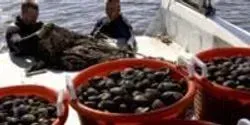contaminants

A sampling of more than 1,000 Gulf of Mexico fish, shrimp, oysters and blue crabs taken from Cedar Key, Fla., to Mobile Bay, Ala., between 2011 to 2013, shows no elevated contaminant levels, according to a seafood safety study conducted by Dr. Andrew Kane and colleagues at the University of Florida. In fact, some 74 percent of the seafood tested showed no quantifiable levels of oil contaminants at all.

Laboratory contaminants likely explain the results of a recent study claiming that complete genes can pass from foods we eat into our blood, according to a University of Michigan molecular biologist who re-examined data from the controversial research paper.

Americans love their dogs, but they don’t always love to pick up after them. And that’s a problem. Dog feces left on the ground wash into waterways, sometimes carrying bacteria — including antibiotic-resistant strains — that can make people sick. Now scientists have developed a new genetic test to figure out how much dogs are contributing to this health concern, according to a report in the American Chemical Society journal Environmental Science & Technology.

Research from Kansas State University in Olathe has shown that four out of 10 spices, sold in bulk in the Kansas City metro area, contain contaminants that could be harmful to your health.















